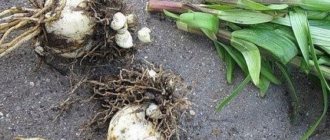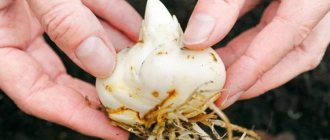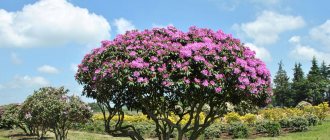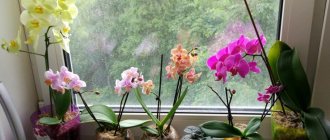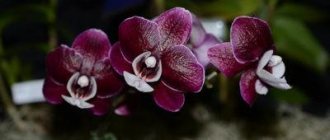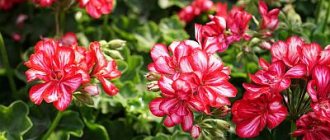Rhododendron is a hybrid plant of the heath family known as azalea. Depending on the species, the flowering period of the crop may differ. Also, the time of active flowering is influenced by the timing of rhododendron transplantation and how correctly the technical process was carried out. To ensure the plant blooms abundantly, you should adhere to several rules regarding room illumination, temperature, humidity, soil composition and the availability of nutrients.
Transplanting rhododendron in spring and autumn: which is better
Transplanting rhododendron bushes to a new location or the first planting is carried out both in spring and autumn. Of course, you need to follow some simple rules.
Rhododendrons - a delightful garden decoration
- In spring, rhododendron is transplanted depending on the region of growth from April to May. In warmer places a little earlier (Middle Zone), and in colder places a little later (Siberia, the Urals, etc.).
- In autumn, it is better to transplant from September to mid-October in order to be in time before the first frost.
- It is better to plant or replant deciduous shrub species only in the spring, so that they have time to take root well and survive the winter.
- In conditions of strong temperature changes and the presence of extremely low temperatures, it is also better to transplant and plant in the spring, for better adaptation to the climate.
Important! It is strictly forbidden to disturb the plant during flowering and two weeks after its end.
Features of the azalea life cycle in autumn
In the autumn, the plant prepares for winter (pruning and covering). The flowering and condition of rhododendron next season depend on the quality of these actions. It is important for a gardener to know the slightest nuances and rules for preparing flowers for hibernation in the fall (you can learn more about preparing rhododendron for winter in the fall in this material).
Reference. The word “rhododendron” literally translated from Greek means “rose tree” or “tree with roses”, but it has nothing to do with roses. Their connection is only in the beauty of flowering, a wide variety of types and varieties.
In the fall, pruning of bush plants is done - one of the mandatory and very important processes. All perennial plant species are exposed to it, rhododendron is no exception.
Types of possible pruning:
- sanitary;
- rejuvenating;
- formative.
You can find out more about whether or not rhododendron is pruned for the winter here. At the end of autumn, as soon as the first frosts set in, the rhododendron bushes are tied with rope and covered with plastic wrap or a bag. This makeshift hut must be removed immediately after the snow melts.
The deciduous species tolerates winter well in temperate climates. Can survive frosts down to 10 degrees without shelter. If the temperature drops below, you will have to use burlap.
Evergreen varieties of rhododendrons tolerate low temperatures less well. Bushes need additional shelter, as they often break branches under the weight of snow cover or strong winds. It is best to build a small insulating structure over the bush to protect the plant.
Where to choose a place for transplantation
Rhododendrons have a shallow root system and do not tolerate excess moisture well, so it is strictly forbidden to plant them in places with stagnant groundwater, in lowlands or wetlands. It is also worth considering that the shrub is quite shade-loving, so the optimal planting location will be the northern or eastern side of the site, without direct midday sun rays.
When to transplant lilies from one place to another
A good solution would be to plant bushes under the canopy of taller trees, but only with a deep, taproot system, otherwise the rhododendron will not have enough nutrition. The plant works best adjacent to tall coniferous trees.
On the question of whether it is possible to plant rhododendrons in the sun: this planting option is possible, but only on the condition that direct sunlight does not fall on the plant from 11 a.m. to 4 p.m. Rhododendron will do well with only diffused light or light shading. At the same time, deciduous varieties prefer more sunlight than evergreen ones.
Important! It is necessary to choose places for planting where there is no strong wind, otherwise the plant may not survive the winter.
A bad place for planting would be an open area with prevailing winds, as well as places near buildings where there are frequent drafts - if in the summer the plant does not suffer much from this, then in the winter there is a high risk of the bush freezing.
Preparation of soil and containers for transplantation
It is very important to consider what kind of soil rhododendron likes: preference is given to acidic soils, with a pH of 3 to 4.5. The optimal solution would be peat soil, but you can prepare the substrate yourself. The main criteria are good air permeability and drainage, so it is important to ensure good soil looseness.
Transplanting clematis to another place in autumn, spring or summer
Depending on the type of soil on the site, the substrate is made in various ways:
- for loam, a mixture of high-moor peat, humus, pine needles and garden soil directly is suitable, and the proportion of peat should be greater;
- for sandy soils, the proportion of loam, peat and humus increases.
One of the best soil mixtures for rhododendrons, regardless of the characteristics of the underlying soils, is high-moor peat, humus, pine needles and sand in a ratio of 3:2:1:1. It’s a good idea to add about 40 grams of mineral fertilizers to it and mix thoroughly.
It is important to know! Manure, sawdust, black soil, lower peat and foliage should not be added to the substrate for rhododendrons.
If the transplant is carried out not in open ground, but in a planting container, it is necessary to select its dimensions based on the current size of the root ball, + 20-30% of the volume. This allows the development of the root system to continue. It is important to ensure good drainage to avoid water stagnation and root rot.
Step-by-step instructions for correct azalea transplantation
The most commonly used method of transplanting rhododendron to another place in the fall is the transshipment method. The acidity of the soil used should be within 4-5 pH; it can be bought already prepared in specialized stores.
If this is not possible, preparing the soil mixture yourself is very simple:
- pine needles and high-moor peat are mixed, proportion 2:3;
- river sand and leaf soil are added in equal proportions.
The container for planting is selected taking into account the size of the root system and the height of the drainage layer of 3-5 cm. The pot should not be too deep, its width is approximately 2-3 cm larger than the previous pot. Preference is given to plastic or clay containers.
The procedure consists of the following steps:
- together with the earthen lump, the bush is removed from the old pot;
- if the flower is too large (perennial), it is divided into smaller parts, which are planted separately;
- before placing it in the ground, the azalea is dipped together with the lump into clean water, to which biostimulants have previously been added;
- then 0.5 cm incisions are made in the lower and upper parts of the coma so that the flower accumulates enough moisture;
- the bush is left for some time in a dry, cool place to allow excess water to drain;
- a drainage layer is laid on the bottom of the container, the plant is placed in the center of the flowerpot, the roots are sprinkled with a layer of special soil.
When transplanting rhododendron in summer or autumn, it is important not to allow the root collar to go too deep into the ground. This can lead to rotting of the roots, hence the death of the plant.
Choice of neighbors and transfer distance
In order for the bushes to grow and develop well, it is necessary to choose the right place with favorable “neighbors”.
Why do rhododendron leaves turn yellow and what to do?
An ideal neighborhood would be to plant next to conifers such as larch, spruce or pine. In the garden plot, apple trees, cherry trees, pears and oaks will be good neighbors.
Important! It is strictly forbidden to place plants next to elms, birches, maples, chestnuts and lindens.
Another aspect to consider when planting is the distance between rhododendrons and their neighbors. Thus, it is necessary to retreat at least one and a half meters from buildings, and at least 2 meters from large trees and shrubs. A distance of 1.5-2 meters should be maintained between the bushes themselves.
Transplant technology step by step
How to transplant a rhododendron to a new place
First of all, you need to dig a suitable planting hole for rhododendron: its depth should be about 30-50 cm, depending on the size of the root system, and its width should be 50-80 cm. A drainage layer is poured into the bottom of the hole, then the seedling is tried on: it is necessary to take into account that the root collar of the plant cannot be covered with earth, so it should rise 3-5 cm above the total surface of the earth.
Before transplanting a rhododendron bush to another place, it is necessary to moisten the root system abundantly: if the root ball is dry enough, then it should be placed in a container with water for an hour or two, until air bubbles stop rising from the roots.
The finished drained hole is spilled with water to shrink the soil, then a bush is planted in it and covered with the prepared substrate. The plant is watered abundantly in the circle around the trunk - if the soil shrinks, then the substrate is added to the required level.
Important! The final stage is to carefully mulch the soil from pine needles, peat or foliage in a layer of up to 6 cm. The newly planted plant is shaded for 7-14 days, and in case of winds, a support is installed.
Second transplant to a permanent place
Rhododendrons tolerate transplants well, both in the first years of life and in adulthood. Usually, after growing a small bush at home, the plants are planted on a common ridge to grow and gain strength, and already in the 3-4th year of life they are planted in a permanent place of growth.
Regardless of the number of transplants, the general requirements for them are the same, so any manipulations are carried out according to a standard algorithm.
Caring for rhododendron in open ground
In order for rhododendron to grow well and bloom profusely in your summer cottage, it needs proper and timely care.
Rhododendron, like all heathers, does not tolerate drying out of the soil. And the peat mixture in which this shrub grows dries out very quickly, especially in the summer when the weather is hot. Therefore, it is worth paying regular attention to the plant and watering it .
Soil moisture is also very important for rhododendron.
Advice! In the first 2 years, it is highly recommended to do surface spraying in dry weather, in other words, water directly over the crown.
Weeds should not be allowed to grow in the tree trunk of the bush. To avoid this, it is recommended to mulch the tree trunk circle even at the planting stage and, if necessary, add additional mulch, as well as weed and loosen.
Top dressing
In early spring, to feed rhododendron with any nitrogen-containing fertilizer . For example, you can prepare a solution of ammonium nitrate (20 grams per 10 liters), or even better, use a more acidic nitrogen fertilizer - ammonium sulfate .
If your rhododendron bloomed profusely, then mandatory summer feeding is required to replenish its strength.
As for such fertilizing, it is advisable to do 2-3 fertilizing with acidic fertilizers during the summer. Ready-made fertilizers for azaleas, rhododendrons and other heather crops are excellent for this .
The second (potassium-phosphorus) feeding of rhododendrons in the summer should be done at the end of July. For this you should use potassium sulfate (20 grams per 10 liters of water), as well as superphosphate . (30 grams per 10 l).
Important! Never feed your rhododendrons with wood ash! This potassium fertilizer has an alkaline reaction .
At the end of flowering in the first 2-3 years, it is advisable to quickly and carefully remove faded inflorescences so that rhododendrons do not waste energy on producing seeds.
After the rhododendron has flowered, if it feels good and you take care of it properly, it will definitely produce young shoots. If they do not appear, then this is a clear signal that the care is incorrect or insufficient (for example, watering).
Video: caring for rhododendrons
Rhododendrons are quite winter-hardy (withstand temperatures dropping from -25 to -40 degrees), however, in the event of a snowless winter, the plant may freeze, so it is advisable to cover the tree trunk with a layer of mulch of 5-8 cm (for example, fresh pine sawdust ).
Note! You can read more about caring for rhododendrons in the fall and preparing them for winter in this article .
How to feed the plant
When rhododendron is transplanted, a small amount of mineral fertilizers is already added to the soil mixture. The next feeding is done 3-4 weeks after planting, when the plant takes root.
In the spring, before flowering, plants are fertilized with organic mixtures - blood meal, half-rotted cow manure or horn meal. You can infuse the manure for 3-4 days in water, and then water the ground around the bushes with the resulting slurry, but first moisten the ground well with plain water.
Mineral fertilizers that do not contain chlorine - superphosphates, nitrogen, phosphorus and sulfate substances such as potassium, calcium, ammonium, magnesium - have a good effect on the growth and development of shrubs.
Important! In summer, from mid-June until September, fertilizing is not carried out.
Proper transplantation is the key to good growth, development and flowering of the bush
Rules of care after transplantation
Like many plants, this crop needs regular watering in the first year after transplantation. From mid-spring to the end of summer, the procedure must be done every 2 days. 5 liters of water should be poured onto one bush. Spraying is also very important; you need to do this every day, in the evening.
Important! should not
be fertilized with chlorides and lime.
This can have a detrimental effect on the plant. In the first year after planting, do not forget to periodically mulch the soil. This way you can constantly maintain soil moisture around the plant. For the winter, the young bush should be covered with spruce branches or other suitable material (agrofibre or lutrasil).
Difficulties and problems
With a competent approach, no difficulties should arise, especially if you take into account the timing when you can transplant rhododendron from one place to another, and the locations of the bushes themselves.
Important! One of the recommendations that can help avoid problems is to pay attention to the internal compass of plants: when replanting, you need to take into account the orientation of the bush to the cardinal points and place it in a new place in exactly the same position - this will reduce stress and allow you to adapt faster.
A common difficulty for gardeners is also often digging up a bush from its usual place, so it is better to follow some simple tips:
- thoroughly moisten the soil before digging up the plant;
- carefully loosen the soil with a pitchfork or rake at a distance of up to 80 cm from the base of the bush;
- Using a pitchfork, dig the soil around a circle 100 cm from the root collar and to a depth of 30-40 cm.
This scope is taken in order not to damage the superficial and widely spreading roots of the bush. After which the bush can be carefully removed from the ground and transported to a new planting site. If there are dried roots, they can be cut off, but the main thing is not to deprive the root system of its usual earthen coma.
When can a rhododendron be transplanted to another location? If it has grown greatly or needs more favorable conditions, or it can be done simply at will. Different types of rhododendrons are the same in one thing - they are not afraid of transplantation, and if you follow simple technology, the plants will remain grateful and will delight you with lush flowering for a long time.
